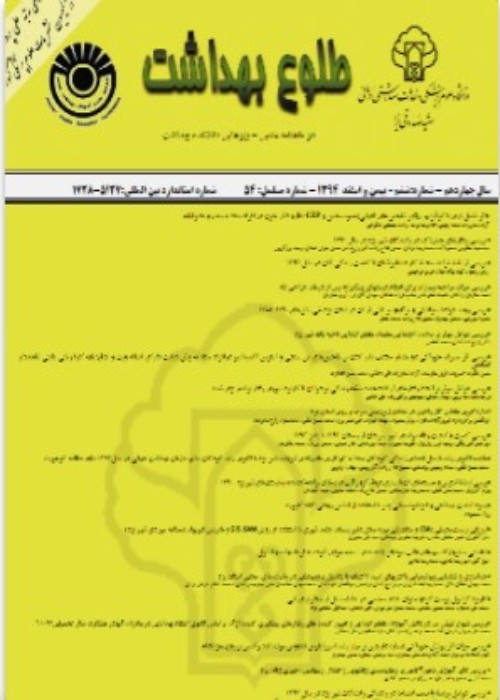Effect of Education by Text Messaging Based on Health Belief Model on Food Handling Behaviors in Health Volunteer's Yazd City
Author(s):
Abstract:
Introduction
The text message can be presented as a way to change patterns of behavior-based prevention programs, such as the theory of planned behavior and health belief model to be used., And as an alternative approach to the individual and group training programs should be considered. The present study examined the effectiveness of this new method in promoting food handling behavior of a team of health volunteers on health belief model was based.Methods
This study was an evaluation of an intervention in which 16 health centers, 200 health volunteers who were actively involved Yazd city who were randomly divided into two groups. After the initial test, chi-square test, t test were analyzed.The intervention group received an educational package on the SMS regarding food handling behavior on health Belief Model was designed for codification; wantonly within a month and a half a day and after 8 weeks of the last SMS sent from any intervention and control groups was performed in a secondary assessment. Tool for data gathering questionnaire consisting of structures of health belief model including demographic variables, respectively. Data were using 18spss and employing applied, statistical tests of non-parametric Wilcoxon, Mann-Whitney and Kruskal-Wallis, Chi-square and correlation coefficient the analysis was.
Results
The overall food handling behavior, after training significantly increased in the intervention group (p =0/01), while the control group was not significant (p=0/21). Cooling behavior after training in the experimental group and the control group was significantly increased (p =0/00). Cooking behavior, after training in the intervention group (p =0/11) and control group( p =0/17) was not significantly increased. Individual health behavior, after training in the intervention group (p =0/13) and control group (p =0/07) was not significantly increased.Separation behavior after training has not significantly increased in the intervention group (p =0/73), while the control group was significantly increased (p =0/00). Structures score of perceived susceptibility, perceived severity, perceived benefits, perceived barriers, so after training significantly increased in the intervention group, while the control group than in the other structures perceived severity scores increased significantly observed. (p =0/00)
Conclusion
The results of this study show that the short message service as a new and effective method of Raeder shaping food management practices used.Keywords:
Language:
Persian
Published:
Tolooe Behdasht, Volume:15 Issue: 1, 2016
Pages:
162 to 175
magiran.com/p1550755
دانلود و مطالعه متن این مقاله با یکی از روشهای زیر امکان پذیر است:
اشتراک شخصی
با عضویت و پرداخت آنلاین حق اشتراک یکساله به مبلغ 1,390,000ريال میتوانید 70 عنوان مطلب دانلود کنید!
اشتراک سازمانی
به کتابخانه دانشگاه یا محل کار خود پیشنهاد کنید تا اشتراک سازمانی این پایگاه را برای دسترسی نامحدود همه کاربران به متن مطالب تهیه نمایند!
توجه!
- حق عضویت دریافتی صرف حمایت از نشریات عضو و نگهداری، تکمیل و توسعه مگیران میشود.
- پرداخت حق اشتراک و دانلود مقالات اجازه بازنشر آن در سایر رسانههای چاپی و دیجیتال را به کاربر نمیدهد.
In order to view content subscription is required
Personal subscription
Subscribe magiran.com for 70 € euros via PayPal and download 70 articles during a year.
Organization subscription
Please contact us to subscribe your university or library for unlimited access!




